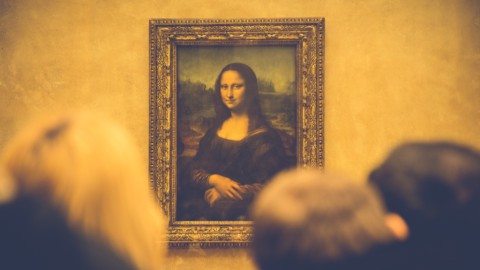The Louvre Museum, as we know it today, i.e. as a museum open to the public, is 227 years old. It was in fact November 8, 1793, just a few years after the start of the French Revolution, when the historic palace, which was originally a fortress and then was the seat of the French monarchy until 1682 (when the kings moved to Versailles), was officially transformed into a museum. The project was fully implemented by a revolutionary government, after the Constituent National Assembly in 1791 decreed the conversion of the former royal palace into an exhibition space. Thus was born the Muséum central des arts de la République, which was immediately enriched by important works from all over Europe: from 1794 onwards, in fact, the victories of the French revolutionary army brought an ever-increasing number of works of art from the defeated countries to the homeland.
Today the Louvre Museum comprises over 380.000 objects and works of art. There are 35.000 works on permanent display, while there are 11.900 paintings (of which 6.000 on permanent display and the rest kept in storage), which represent the second largest collection of pictorial art in the world after that of the Hermitage Museum in St. Petersburg in Russia. However, it is the most visited French museum in the world: first in terms of number of annual visitors again in 2018, with 10 million. The palace that houses it is a fortress built at the end of the 80th century during the reign of the Capetian king Philip II, although the current conformation of the palace originates from the works ordered by Charles V of France in the second half of the XNUMXth century. Another important "retouch" took place in the XNUMXs, when the controversial glass and steel pyramid was built in the courtyard at the behest of the then president François Mitterrand.
Among the most important works kept in the Louvre there are obviously la Gioconda , Virgin of the Rocks by Leonardo da Vinci, but also the Wedding at Cana (Verona)Two Prisons by Michelangelo Buonarroti, Bacchus and Ariadne by Giambattista Pittoni, Love and Psyche by Antonio Canova, The oath of the Horatii by Jacques-Louis David, The raft of the Medusa by Théodore Géricault, Freedom that guides the people by Eugène Delacroix, the Venus de Milo , Nike of Samothrace, Code of Hammurabi.





